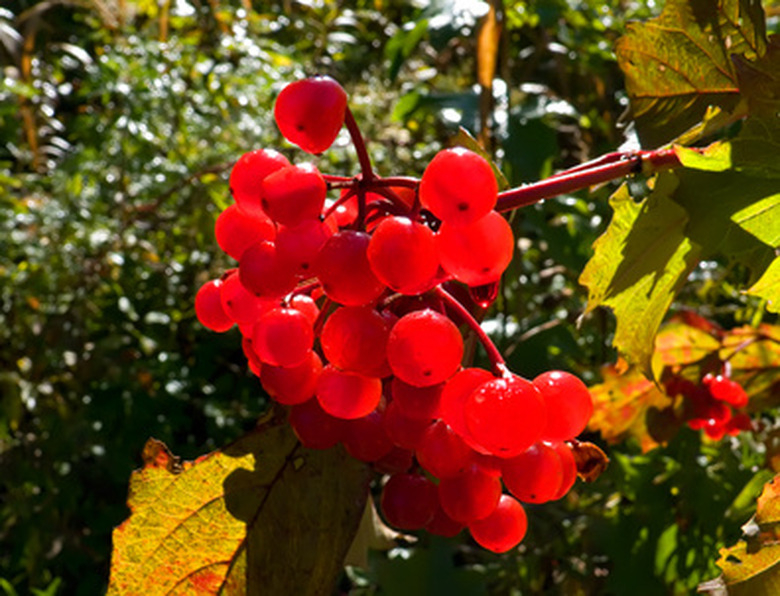Viburnum Disease
Viburnum plants are susceptible to an array of fungal infections that cause disease and severely damage the plant. Familiarize yourself with the infections and controls for surefire identification and management of any problems that arise. Maintain your plants through proper care for vigorous viburnums that are ready to fight and win.
Description
Viburnums include more than 150 deciduous and evergreen species that grow to heights ranging from 2 to 30 feet, according to the Clemson University Extension. Prized for the aromatic blossoms and colorful fall foliage, this plant makes an impact in the garden. The display of fruit in oranges, reds, pinks, blues, blacks and yellows brings butterflies to your garden. Protect these plants from common diseases to prevent cosmetic harm to your garden.
- Viburnum plants are susceptible to an array of fungal infections that cause disease and severely damage the plant.
- Maintain your plants through proper care for vigorous viburnums that are ready to fight and win.
Proper Care
Vigorous plants are more likely to resist or heal from disease than weakened viburnums. Grow your viburnum in an area with the correct light exposure. Most viburnums are sun-lovers, but some prefer shade. Viburnums thrive in moist, acidic soil with a pH of 5.5. to 6.5, and soils that are rich in, organic content, according to the Clemson University Extension.
Types
Most diseases that affect viburnums are fungal in nature. Fungal leaf spot, caused by fungi of the Cercospora species, Phoma species and Phyllosticta species, result in foliage damage. Fungal leaf spot thrives in warm, humid summer conditions. Powdery mildew causes infection due to the fungus Erysiphe sparsa, with a particular preference for warm daytime temperatures, cool nighttime temperatures and high moisture content; these conditions promote fungal germination. Powdery mildew infects new leaf growth as well as young shoots, according to the Clemson University Extension.
- Vigorous plants are more likely to resist or heal from disease than weakened viburnums.
- Fungal leaf spot, caused by fungi of the Cercospora species, Phoma species and Phyllosticta species, result in foliage damage.
Effects
Fungal leaf spot disease of viburnums results in the presence of abnormal spots on leaf surfaces in red to gray-brown that expand and form larger splotches. Leaf tissue within the spots dries out. The problem may diminish health and causes cosmetic damage, but does not usually cause severe injury. Powdery mildew disease on viburnum plants produces a white to gray growth of fungus that resembles powder on foliage surfaces, according to the Clemson University Extension. Extreme cases result in malformed leaves.
Control
To control viburnum leaf spot, keep leaves dry by watering at the base of the plant. Moist leaves offer an ideal environment for the proliferation of fungi. Apply a fungicide with the active ingredient chlorothalonil or mancozeb as soon as you notice a problem; apply once every two weeks until the problem improves. For powdery mildew control, consider planting a resistant variety like Viburnum burkwoodii Mohawk, advises the Clemson University Extension. Additionally, the application of horticultural oil or a fungicide with the active ingredient triadimefon offers effective control. For both diseases, remove and destroy infected plant parts to decrease infection severity. Sanitize pruning tools after each cut and from one plant to the to next to prevent the spread of fungal pathogens.
- Fungal leaf spot disease of viburnums results in the presence of abnormal spots on leaf surfaces in red to gray-brown that expand and form larger splotches.
- To control viburnum leaf spot, keep leaves dry by watering at the base of the plant.
